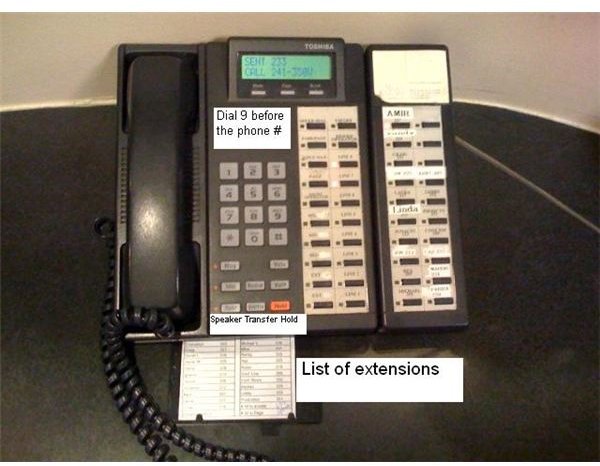Exploring PDCA Examples: Use the Plan-Do-Check-Act Process in Your Company
You’ve heard much about undertaking quality improvement through the use of PDCA cycles, and the terminology seems intimidating
to those who haven’t yet experienced the process. But it really works as a way to simplify our speed-and- goal-driven corporate lives. First we’ll look at the steps of Plan-Do-Check-Act, and then we’ll take a look at some PDCA examples.
You’re undoubtedly aware that the Plan-Do-Check-Act model is variously attributed to W. Edwards Deming as well as Walter A. Shewhart. Both of them were statistical engineers whose major career successes occurred in the years after World War II. Shewhart came up with the phrase first, and then Deming later adapted it. Deming revised it as the Plan-Do-Study-Act because he believed the word “study” better represented the concept of comprehending why change results from a given process—although PDCA remains the more popular mnemonic. What you might not realize, if you haven’t cracked open your high school science textbook in some time, is that PDCA ultimately mimics the ages-old Scientific Method in which we pose a hypothesis, carry out an experiment, evaluate our results, and confirm or refute our hypothesis.
Now that you’ve read the theory of PDCA; let’s look at some examples to see how it works in action.
PDCA Example 1: Industrial Application

Our first PDCA example looks at the president of Acme Bathroom Remodeling as he studies some figures and realizes that projects get bogged down during bathtub installation. He assembles two of his installers, his secretary, and his bookkeeper and assigns them to meet on a biweekly basis.
First, he identifies that bathtub installation averages three days and thirty-two manpower hours. Then he rewrites his statement so that it reflects how many days he believes it should take: “Within six weeks, installing a bathtub will take one day and ten manpower hours.” In this example, the manager has not said “It takes too long to install a bathtub.” Instead, he has stated when he wants to see an improvement, exactly what that improvement will be, and how it will be measured.
Next, the team kicks around possible reasons for the lengthy installation time:
- Does the customer choose the bathtub early enough in the remodeling process?
- Are there delays in ordering the bathtub from the manufacturer?
- Are the hardware, sealants, and other materials necessary for installation always on hand?
Over the next few weeks, team members are assigned to track these various factors. But now that everybody is paying attention to improving the process, it is discovered that some bathtubs are shipped by one method that is much quicker than another. The Plan is acted upon—or revised—and the process continues including this new parameter. With the revised plan the customer chooses the bathtub at the onset of remodeling, which is then ordered in a timely fashion and shipped by the preferred shipper. Adequate installation materials are kept on hand; and halfway through the second cycle, the manager realizes that the goal is met.
PDCA Example 2: Social Services
The director of an adolescent shelter care facility in a northeastern urban area assembles a PDCA rapid-cycle team to confront excessive negative behavioral incidents exhibited by the clients. The team identifies that in 90 days the goal is a 25% reduction in negative behaviors. When the six people on this team meet, each person identifies his perceived reason for the negative behaviors. Each possible reason is written on a chalkboard. Then each person is allowed to vote for two of the behaviors. At the end of this brainstorming session, the group arrives at the conclusion that new employees receive inadequate training. Over the course of the next three months, specific changes are suggested: New employees will be assigned to mentors. No employee will be left alone with clients until he has worked for two full weeks. A courier position is suggested so that employees are not pulled away from the clients to do errands. An employee handbook is under preparation. Employees on breaks will be adequately covered.
In this example, the team leader is ineffective. The members of the team fail to meet on a consistent basis. Despite the sound plan put together by the team, ultimately the goals are not met.
Please click on Page 2 to read more PDCA examples for public schools and the medical field and a look at 5 common factors for successful PDCA plans.
PDCA Example 3: Medical Clinic

In an eight-county rural provider of counseling services, it takes nine days from a patient’s first phone call until he is assessed for treatment. A company executive notices that only 71% of scheduled patients show up for their assessments. The executive writes this as “It takes nine days to get an assessment and only 71% of patients show up.” For the Plan, it is rewritten as “In three months, it will take three days to get an assessment and 90% of patients will show up.” Some of the changes instituted include asking clients when they want to be assessed and adjusting staff schedules to accommodate those requests. A specific staff person is assigned to ensure that as many slots as possible are filled each day. During the process, problems with the phone system are discovered and the plan is revised.
Within four months, the average length of time between a phone call and assessment decreases to five days. The no-show rate drops, and there is an unexpected bonus–a documented increased success rate for those clients who request and receive immediate assessments. You can also read Performing an Analysis of a Process Improvement Plan to see how this PDCA example translates into client recruitment and retention in the corporate setting.
PDCA Example 4: Public Schools

Your local school system utilizes a form of PDCA processes, even if nobody calls it that. Students’ grades are constantly evaluated. Scores on standardized tests are logged and compared to those of students in demographically similar districts. Principals institute after-school study programs and otherwise motivate teachers in order to boost scores. Taxpayers vote for levies that will provide funds for updated textbooks and improved facilities. If the people in the community are not satisfied, school board members are voted out of office and educators are replaced.
Five Common Factors of Successful PDCA Examples

Experts describe five factors that are necessary, no matter what industry you’re in, if you want your PDCA rapid-change cycle to succeed.
- Your change leader must be someone who can interact with all levels within your corporate structure. He’s also got to keep his people motivated and interested.
- You must demonstrate the problem’s negative impact to your corporate executives. Executives most often buy into problems that involve assets or human resources concerns at one level or another.
- Keep abreast of what other companies are doing, both inside and outside your industry.
- Ask your customers what they want. Pretend you’re a customer and contact your company for service. Throughout the process, take the time to survey customers about why they think mistakes happen or how they make choices. Contact customers again after your new processes have been in place to be certain that changes are effective.
- Institute your changes with a small group of people and use short test cycles before adapting or dropping a change. Remember that PDCA is for rapid-cycle change!
Resources
- NIATx, University of Wisconsin-Madison, at https://www.niatx.net/Home/Home.aspx.
- USA.gov, Navy Handbook for Basic Process Improvement, at https://www.au.af.mil/au/awc/awcgate/navy/bpi_manual/handbook.htm.
- American Society for Quality, https://www.asq.org/learn-about-quality/project-planning-tools/overview/pdca-cycle.html.
Image Credits
- PDCA Diagram (BludgerPlan) Wikimedia Commons, PDCA diagram by BludgerPlan
- Relax (Clix) sxc.hu, Relax, by Clix
- Phone (Brittkitts) Wikimedia Commons, Phone, by Brittkitts
- Doodled Desks (igoghost) sxc.hu, doodled desks, by igoghost
- Number 5 (Rover 777) Wikiimedia Commons, Number 5, by Rover 777
